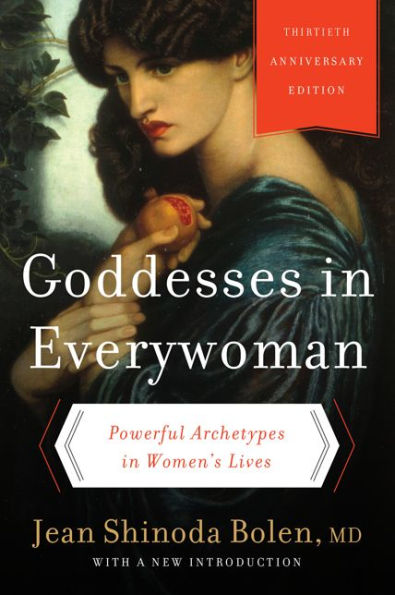Jean Shinoda Bolen’s celebrated work of female psychology that uses seven archetypical goddesses to describing behavior patterns and personality traits, as relevant and timeless today as when it was first published thirty years ago.
Myths are fascinating stories that become even more intriguing when we realize that they can reveal intimate truths about ourselves and others. Jean Shinoda Bolen brings the Greek pantheon to life as our inner archetypes and applies the power of myth to our personal lives. Once we understand the natural progression from myth to archetype to personal psychology, and realize that positive gifts and negative tendencies are qualities associated with a particular goddess within, we gain powerful insights.
Depending on which goddess is more active within, one woman might be more committed to achieving professional success, while another more fulfilled as a wife and mother. From the autonomous Artemis and the cool Athena to the nurturing Demeter and the creative Aphrodite, she teaches women how to decide which to cultivate and which to overcome, and how to tap the power of these enduring archetypes to become a better “heroine” in their own life story.
Jean Shinoda Bolen’s celebrated work of female psychology that uses seven archetypical goddesses to describing behavior patterns and personality traits, as relevant and timeless today as when it was first published thirty years ago.
Myths are fascinating stories that become even more intriguing when we realize that they can reveal intimate truths about ourselves and others. Jean Shinoda Bolen brings the Greek pantheon to life as our inner archetypes and applies the power of myth to our personal lives. Once we understand the natural progression from myth to archetype to personal psychology, and realize that positive gifts and negative tendencies are qualities associated with a particular goddess within, we gain powerful insights.
Depending on which goddess is more active within, one woman might be more committed to achieving professional success, while another more fulfilled as a wife and mother. From the autonomous Artemis and the cool Athena to the nurturing Demeter and the creative Aphrodite, she teaches women how to decide which to cultivate and which to overcome, and how to tap the power of these enduring archetypes to become a better “heroine” in their own life story.

Goddesses in Everywoman: Powerful Archetypes in Women's Lives
334
Goddesses in Everywoman: Powerful Archetypes in Women's Lives
334Paperback(30th Anniversary ed.)
Related collections and offers

Product Details
| ISBN-13: | 9780062321121 |
|---|---|
| Publisher: | HarperCollins Publishers |
| Publication date: | 07/01/2014 |
| Edition description: | 30th Anniversary ed. |
| Pages: | 334 |
| Sales rank: | 44,684 |
| Product dimensions: | 5.22(w) x 8.08(h) x 0.68(d) |
About the Author
Customer Reviews
Explore More Items
Is
Imagine, if you will, a disease—one that has only subtle outward symptoms but can hijack your entire body
In this, his most famous and influential work, Carl Jung made a dramatic break from the psychoanalytic tradition established by his mentor, Sigmund Freud. Rather than focusing on psychopathology and
—Reid Wilson, PhD, author Stopping the Noise in Your Head
A comprehensive treatment plan grounded in evidence-based cognitive
—Erik Larson, #1 New York Times
In this compact volume, British psychiatrist and writer Anthony Storr has selected extracts from Jung's writings that pinpoint his many original contributions and relate the development of his
We are all storytellers—we create stories to make sense of our lives. But it is not enough to tell
This original collection brings together the most
Considered one of Jung's most controversial works, Answer to Job also stands as Jung's most extensive commentary on a biblical text. Here, he confronts the story of the man who challenged God, the
A leading cognitive scientist argues that a deep sense of good and evil is bred in the bone.
From John Locke to Sigmund Freud, philosophers and psychologists have long believed that we begin
